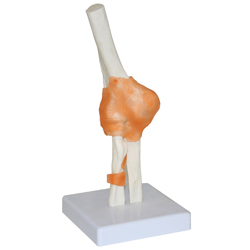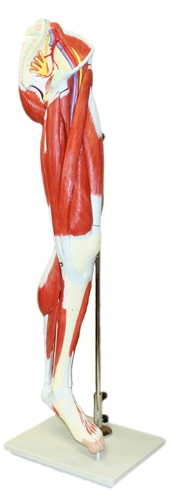More Anatomy Models
Previously we covered human body part models we carry, today we will show more models that have more detail of joints, organs, etc.
First is the Bone Tissue Model
This relief model depicts both exterior and interior details of four different human bone structures. Includes the femur, trabecular/spongy bone, compact bone, and blood vessels. It measures 16.5″ x 12″.
Continuing with Bones we have the Bone Structure Model
This bone structure model is enlarged 80x and demonstrates a section of a lemallar bone, along with the normal structure of a tubular bone. This extremely detailed model utilizes cross and longitudinal sections through all of the levels of bone to demonstrate the individual bone components. The model is 10.5″ x 8″ X 6″
Another close up framed model is the Skin Section Model
This model depicts a section of human skin and is enlarged 70X. The epidermis, dermis and subcutaneous layers of tissues are shown in great detail. Representations of sweat glands, hair follicles, receptors, motor nerves, blood vessels, sebaceous glands and fatty tissue are also shown. Mounted on a base.
Moving the magnification out to life size we have the Shoulder Joint Model
This life-size model depicts the mechanics and detailed anatomy of the human shoulder and provides a great opportunity for student and patient learning. This model features portions of the clavicle, humerus, and shoulder blade as well as the glenohumeral and other ligaments that connect each to one another and allow movement.
Move down the arm we have the Elbow Joint Model:
This life-size model depicts the detailed anatomy of the human elbow joint and provides a great opportunity for student and patient learning. This model features the distal portion of the humerus and the proximal portions of the radius and ulna as well as the smooth articular cartilage and surrounding ligaments.
|
|












